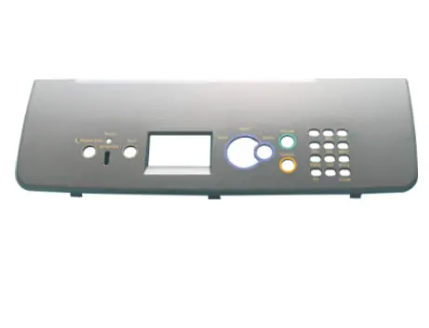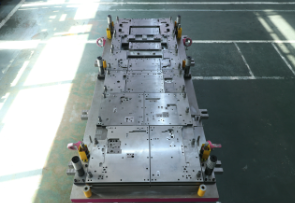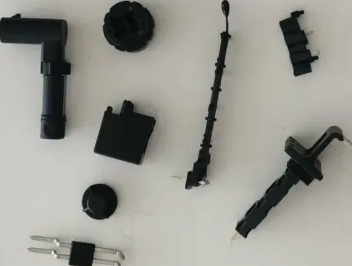Views: 0 Author: Site Editor Publish Time: 2025-07-10 Origin: Site
Injection molding is the backbone of precision plastic manufacturing, enabling the production of complex, high-quality parts across industries such as automotive, home appliances, medical devices, and industrial electronics. However, one often overlooked yet critical factor influencing part quality, cycle time, and operational efficiency is gate design.
Choosing the right gate type in injection molding directly impacts:
Part appearance and surface finish.
Dimensional stability and warpage control.
Cycle time optimization and cost per part.
Long-term mold life and maintenance efficiency.
A gate is the passage where molten resin transitions from the runner system into the mold cavity during injection molding. It is the critical control point for resin flow, pressure, temperature, and shear rates before the cavity fills.
The gate’s design and location affect:
How well the mold cavity is filled, impacting short shots and void prevention.
Shear-induced resin heating, influencing material degradation.
The position and visibility of vestige marks post-molding.
Cooling behavior and cycle times.
Without careful gate design, even the best-engineered molds can fail to deliver consistent quality, resulting in warpage, surface defects, weld lines, and inefficiency.

For a precision mold maker like GreeDaikinMold, every gate design decision is aligned with tight tolerances and cycle efficiency. Key considerations include:
Balancing flow in multi-cavity molds to ensure uniform fill.
Reducing weld lines and trapped air to enhance mechanical properties.
Ensuring easy part ejection without damage.
Supporting automated production with minimal manual intervention.
Choosing the optimal gate type allows GreeDaikinMold to ensure long mold life, high cavity consistency, and lower production costs for its global customers.
In injection mold, the gate is the critical entry point through which molten plastic flows into the mold cavity. The gate design significantly influences the overall quality, appearance, dimensional accuracy, and cycle time of the molded part. In this detailed guide, we will delve into the different types of gates used in injection molding, their unique characteristics, benefits, challenges, and best-use scenarios to help manufacturers make informed decisions for optimized molding processes.
How it Works:
The edge gate, also known as a side gate, introduces molten resin horizontally at the edge or side of the part. This gate type is one of the most commonly used due to its simplicity, versatility, and cost-effectiveness.
Key Benefits:
Easy to Machine and Modify: The edge gate is straightforward to machine into the mold, making it a cost-effective and adaptable option for production. It’s often selected for quick mold modifications or design changes.
Supports Large and Medium-Sized Parts: Ideal for large panels or components where uniform filling and surface quality are essential. It is highly effective when dealing with standard parts in various industries.
Good for Multi-Cavity Molds: Can be easily integrated into multi-cavity molds, ensuring the simultaneous production of multiple parts in a single shot.
Challenges:
Visible Vestige: The gate leaves a visible mark on the part’s edge, which may require post-processing or trimming to improve aesthetics, particularly for cosmetic parts.
Risk of Weld Lines: If the gate location is not optimized, it can lead to weld lines, negatively impacting the part’s structural integrity and surface appearance.
Best For:
Large or medium-sized components, such as appliance panels, automotive interior parts, and flat, geometrically simple components where minor gate marks are acceptable or can be hidden in non-visible areas.
How it Works:
The submarine gate, also called a tunnel gate, injects resin from an angled channel underneath the parting line. It is designed to shear off automatically during part ejection, leaving minimal trace on the finished part, which is especially useful for high-quality products.
Key Benefits:
Automatic Degating: The gate shears off cleanly during ejection, reducing labor costs associated with trimming and improving overall process automation.
Minimal Visible Vestige: This gate type leaves little to no visible mark, which is essential for parts requiring high cosmetic standards.
Allows Full Automation: Ideal for high-cavity molds where manual gate removal would be impractical and costly.
Challenges:
Limited to Certain Wall Thicknesses: The submarine gate may not be suitable for very thin or very thick-walled parts due to challenges with resin flow and shear stress management.
Complex to Modify Post-Machining: Once machined, changing the gate’s location or size can be complex and costly, making it less adaptable in the later stages of the project.
Best For:
Small to medium-sized precision parts, medical components, and consumer electronics where the appearance is critical, and automation is essential for high-volume production.

How it Works:
The pin gate is a direct injection gate that places resin through a central pin directly into the mold cavity, typically used in three-plate molds or hot runner systems.
Key Benefits:
Uniform Filling for Symmetrical Parts: This gate design ensures even distribution of molten plastic, which minimizes warpage and stress in symmetrical parts.
Low-Pressure Drop: Due to the straight and minimal path for resin to flow, it reduces resistance during injection, allowing for smoother material flow and better surface finish.
Good for Cylindrical Components: Ideal for round or symmetrical parts where central filling is advantageous.
Challenges:
Gate Mark May Be Visible: A small gate mark is often visible at the center of the part, which may require cosmetic considerations.
Potential Stress Concentration: The central gate can create stress points in the molded part if not properly designed or managed.
Best For:
Lids, caps, circular parts, and precision lenses where symmetrical filling and surface quality are essential.
How it Works:
The hot tip gate is part of a hot runner system, where a heated nozzle tip injects resin directly into the cavity, eliminating the need for a cold runner and its associated material waste.
Key Benefits:
Eliminates Cold Runners: By using a hot runner system, the need for a cold runner is eliminated, reducing material waste and improving overall process efficiency.
Suitable for Thin-Walled Parts: The hot tip gate allows for consistent resin flow and pressure management, making it ideal for thin-walled parts or delicate components.
Enables Faster Cycle Times: By maintaining a stable melt temperature and consistent flow, it reduces overall cycle times, thus improving productivity.
Challenges:
Higher Upfront Tooling Cost: Hot runner systems are more expensive to design and manufacture, with higher initial costs for tooling and equipment.
Requires Precise Thermal Control: The hot runner system must be carefully controlled to avoid resin degradation or flow inconsistencies that could affect part quality.
Best For:
High-volume production, cosmetic parts, micro-injection components, and packaging where material efficiency, speed, and surface quality are paramount.
How it Works:
The fan gate is a widened version of the edge gate that spreads the resin in a fan-like pattern across the cavity. It is specifically designed to reduce shear stress and promote uniform filling for large, flat components.
Key Benefits:
Reduces Shear Stress: The fan shape reduces the overall shear stress during the filling process, minimizing the risk of warpage and internal stress.
Promotes Uniform Filling: This gate ensures even distribution of material across wide surfaces, which is crucial for large, thin parts.
Challenges:
May Require Post-Processing: The large gate vestige left behind may need trimming or finishing to achieve a smooth part surface.
Not Suitable for Small Parts: The gate design is impractical for smaller, more detailed parts due to its wide nature.
Best For:
Automotive trim panels, flat appliance fronts, and large, thin parts where uniform material distribution and minimal warpage are essential.
How it Works:
The diaphragm gate introduces resin circumferentially around a circular part, allowing for symmetrical and even filling. It is commonly used in tubular or cylindrical components where uniform flow is critical.
Key Benefits:
Excellent for Preventing Air Entrapment: Ensures a complete cavity fill without trapped air, improving part quality and reducing defects.
Ensures Even Flow in Cylindrical Components: The circular gate design helps in achieving uniform wall thickness, which is essential for the structural integrity of cylindrical parts.
Challenges:
Requires Gate Removal: The gate ring must be manually removed after molding, requiring additional post-processing.
Complex Mold Design: Requires precise machining and alignment, making it more complex to implement.
Best For:
Filters, tubes, cylindrical housings, and other round parts where consistent filling and structural integrity are paramount.

Selecting the correct gate type depends on a balanced, data-driven analysis of multiple interrelated factors to ensure optimal molding results:
Circular parts benefit from pin or diaphragm gates to ensure uniform radial flow and prevent air entrapment.
Large flat parts align with fan or edge gates to distribute material evenly across wide surfaces, reducing warpage and sink marks.
Complex geometries with deep ribs may require multiple gates or strategically placed gates to ensure complete fill without voids.
Shear-sensitive resins like PC, PMMA, and certain bio-based plastics require low-shear gates to prevent degradation and discoloration.
Filled resins with glass fibers or minerals need robust gate designs that minimize excessive shear while supporting flow through narrow sections, reducing gate wear and ensuring part integrity.
For parts with visible surfaces or cosmetic zones, using submarine, hot tip, or valve gates minimizes visible vestige and reduces post-processing requirements.
Avoid gate locations in high-visibility areas unless using micro-gating or hot runner systems with precise control to reduce blemishes.
For low to medium-volume runs, cold runner systems with edge or submarine gates provide cost-effective tooling and easy adjustments.
For high-volume production, hot runner systems with hot tip or valve gates reduce material waste, enable faster cycle times, and support fully automated operations.
Hot runner and automatic degating gate designs support lights-out manufacturing, reducing labor costs and ensuring stable cycles across large production batches.
Optimizing gate size and location based on mold flow simulations ensures balanced fill, reduces the risk of overpacking, and shortens cycle time.
Incorporating conformal cooling around gates further enhances cycle efficiency and dimensional stability.
A: Gate design impacts flow patterns, shear rates, part appearance, cycle time, and dimensional stability, influencing overall part quality and efficiency.
A: Edge gates are widely used due to their simplicity and adaptability to many part designs.
A: Yes, optimized gates improve cycle times, reduce rejects, and minimize material waste, lowering total manufacturing costs.
A: For high-volume or cosmetic part production, hot runner gates significantly reduce waste and improve cycle efficiency, offering a strong ROI.
Gate design is a pivotal element in injection mold that directly impacts part quality, production efficiency, and mold performance. Understanding the different gate types and their applications empowers manufacturers to make informed choices that align with their production goals.
At ZHUHAI GREE DAIKIN PRECISION MOLD CO., LTD., gate design is integrated into a holistic approach to mold manufacturing, ensuring customers receive molds that deliver precision, consistency, and efficiency.
ZHUHAI GREE DAIKIN PRECISION MOLD CO., LTD.